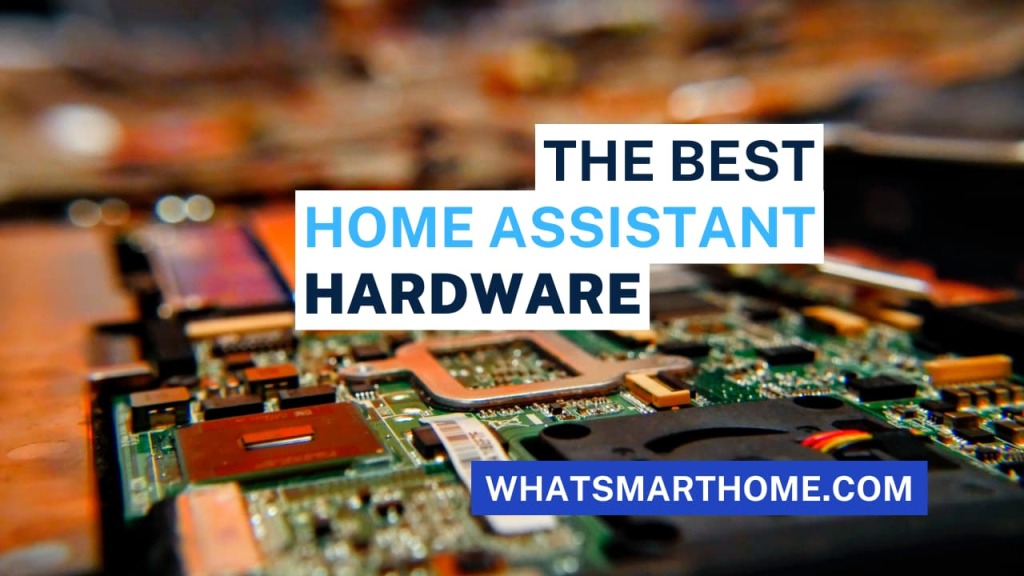Home Assistant is a powerful open-source platform that allows users to create a smart home environment by integrating and automating various smart devices.
As the popularity of home automation grows, the demand for Home Assistant and compatible hardware continues to rise.
In this article, I will explore the essential hardware requirements for Home Assistant and discuss the best options available to build a seamless smart home experience.
Table of Contents
Home Assistant Hardware Requirements
Home Assistant serves as the central hub for all smart devices in your home.
It acts as the brain, enabling you to control and automate smart lights, thermostats, security cameras, and more, through a single unified interface. However, to ensure a smooth and responsive performance, selecting the right hardware for Home Assistant is crucial.
| CPU | A minimum of a 1GHz CPU is recommended. Faster multi-core CPUs will allow you to run more automations and integrations smoothly. |
| RAM | Aim for at least 1GB of RAM, with 2GB or more being ideal. Home Assistant and its underlying Python environment use quite a bit of RAM. |
| Storage | You’ll need at least 5GB free to install Home Assistant. An SSD or NVMe drive is recommended for faster I/O performance. Total storage needs will vary based on how long you keep history/log data. |
| Network | Home Assistant needs to be connected to your home network via Ethernet or WiFi. Ethernet is preferred for reliability. Make sure your network hardware can handle multiple concurrent IoT connections. |
| Power | Opt for a platform that can run 24/7 without interruption. Use a UPS if you have power outage concerns. |
| Hardware Platform | Home Assistant supports installation on Linux, Windows and MacOS machines. Single-board computers like Raspberry Pi and Odroid are popular choices. NUC devices, old desktops or servers also work well. |
The Importance of Choosing the Right Hardware for Home Assistant
The hardware you choose directly impacts the overall performance and reliability of your Home Assistant system. Insufficient processing power or inadequate storage can lead to sluggish response times and even system crashes.
A well-optimized hardware configuration will provide a seamless user experience and unlock the full potential of Home Assistant.
Understanding Home Assistant Components
Essential Hardware Components
To run Home Assistant effectively, you need to focus on three essential hardware components:
Processor and RAM Requirements
The processor is the heart of your Home Assistant setup. For a standard smart home, a quad-core processor with at least 2 GHz clock speed should suffice. However, for larger or more complex setups, consider opting for a higher clock speed or even a multi-core processor. Additionally, 4GB of RAM is recommended to handle multiple tasks simultaneously.
Storage Options
Home Assistant requires storage space to store its operating system and configurations. A microSD card is the most common storage option for single-board computers like the Raspberry Pi.
For more robust setups, consider using a solid-state drive (SSD) or a network-attached storage (NAS) solution such as a Synology NAS.
Networking and Connectivity
Reliable networking is essential for Home Assistant to communicate with various smart devices.
Ensure that your hardware supports both wired and wireless connectivity options, such as Ethernet and Wi-Fi. Also, having Bluetooth, Zigbee, and Z-Wave capabilities can enhance device compatibility.
Home Assistant Compatible Devices
In addition to the core components, you can expand your Home Assistant system with various add-ons to make your home smarter and more secure.
Dongles
There are a few types of dongles that are commonly used to give you local control of your smart devices.
- Zigbee Dongles: These dongles enable communication with Zigbee devices, which are a type of wireless communication protocol widely used in smart home devices like smart bulbs, sensors, and smart plugs. Popular Zigbee dongles for Home Assistant include the ConBee II and the SONOFF Zigbee 3.0 USB Dongle Plus-P. For a more comprehensive look at the best Zigbee dongles check out my article here.
- Z-Wave Dongles: Z-Wave is another wireless communication protocol used in smart home devices. Z-Wave dongles allow Home Assistant to communicate with and control Z-Wave devices, such as smart switches, dimmers, and door locks. Examples of Z-Wave dongles include the Aeotec Z-Stick series and the Zooz Z-Wave Plus S2 USB stick.
- Bluetooth Dongles: Bluetooth dongles add Bluetooth capability to your Home Assistant setup. They allow you to integrate Bluetooth devices, such as Bluetooth trackers, speakers, and Bluetooth-enabled sensors.
- RF (Radio Frequency) Dongles: These dongles enable communication with devices that use RF signals, such as older wireless remote controls or sensors. The best RF dongle to use with Home Assistant is the RFXtrx433E USB HA controller.
Smart Sensors and Detectors
Integrating sensors and detectors, such as motion sensors, door/window sensors, and smoke detectors, can enhance your home’s security and trigger automated actions.
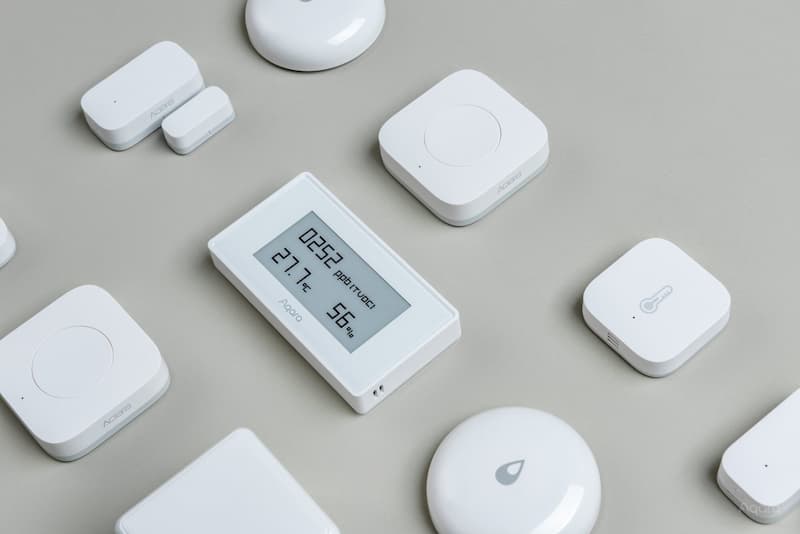
Recommended Sensors
- Aqara Temperature and Humidity Sensor – I use these myself and they are reliable and cheap.
- Aqara Motion Sensor – I don’t use these but they are generally recommended if you use Zigbee.
- Aqara Door and Window Sensor – All of my doors and windows have one of these installed and the batteries have lasted me 2 years.
- Aqara Water Leak Sensor – Cheap and can be a great lifesaver in those emergency situations where a leak occurs.
Smart Thermostats
Check out my dedicated article for the best thermostats for Home Assistant here
Smart Switches and Outlets
Smart switches and outlets enable remote control and automation of lights and appliances, allowing you to save energy and create convenient scenarios.
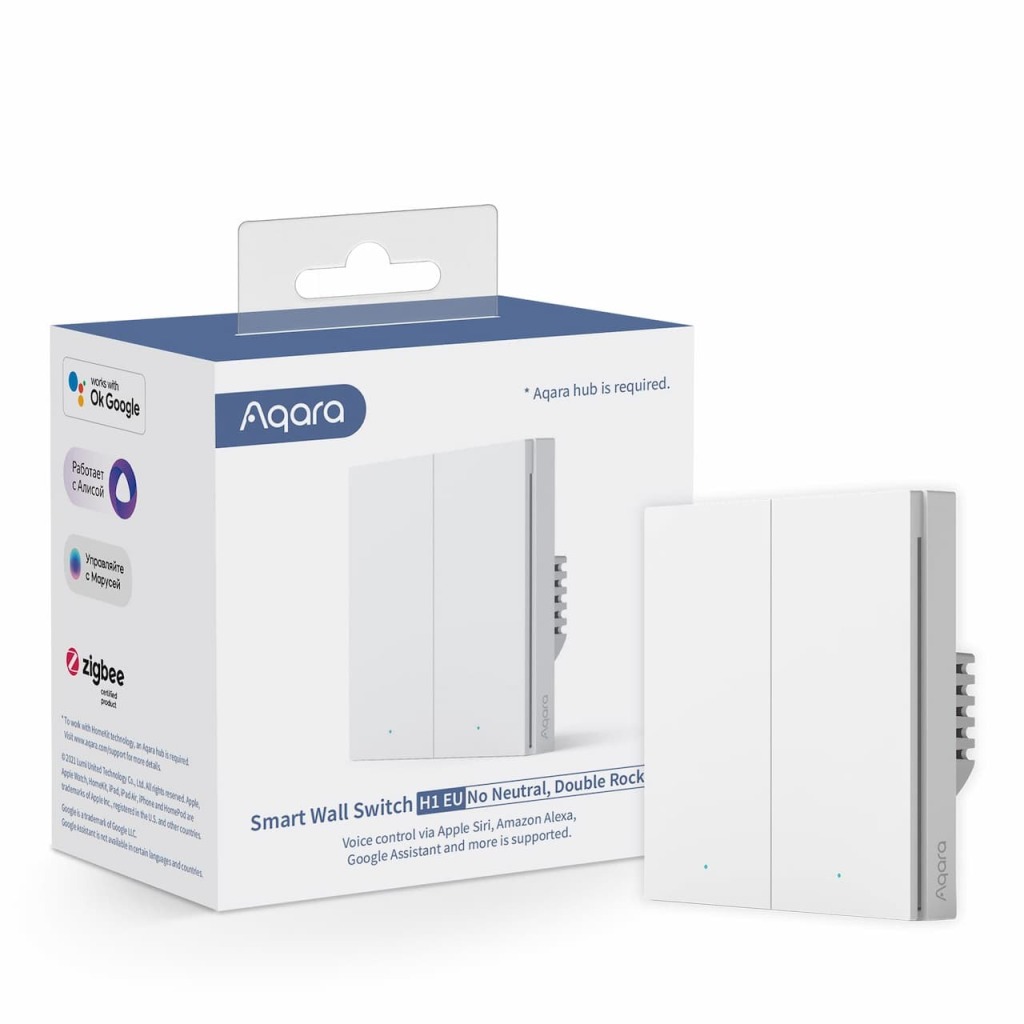
- Aqara Smart Light Switch (with Neutral, Single Rocker) – These are also Zigbee and a better solution to smart light bulbs
- Aqara Smart Light Switch (No Neutral, Double Rocker) – I use these for all of my wall switches
Smart Cameras and Doorbells
Installing cameras and doorbells integrated with Home Assistant adds an extra layer of security to your smart home.
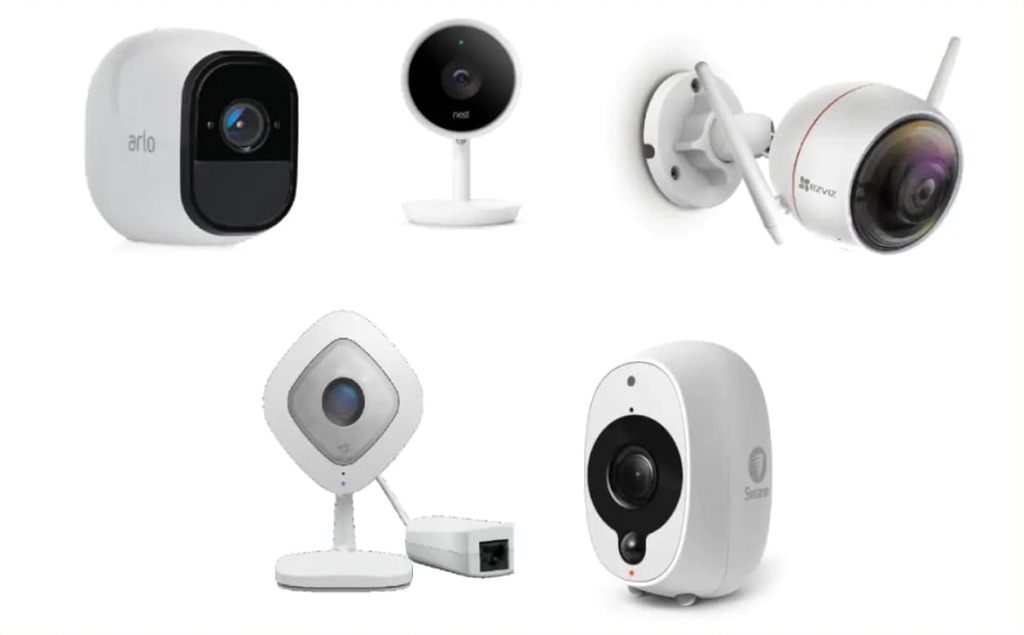
- REOLINK Doorbell WiFi Camera
Ring Video Doorbell – Wired and battery options available– No longer recommended due to rising subscription costs.- WYZE Video Doorbell – Nice budget option for around $30
- Google Nest Doorbell – Wired and battery options available
Tip
For a more detailed look at the best video doorbells to use with Home Assistant, check out my article here.
Smart Speakers
Smart speakers will allow you to add voice control to your smart home by integrating Amazon Alexa or Google Assistant.
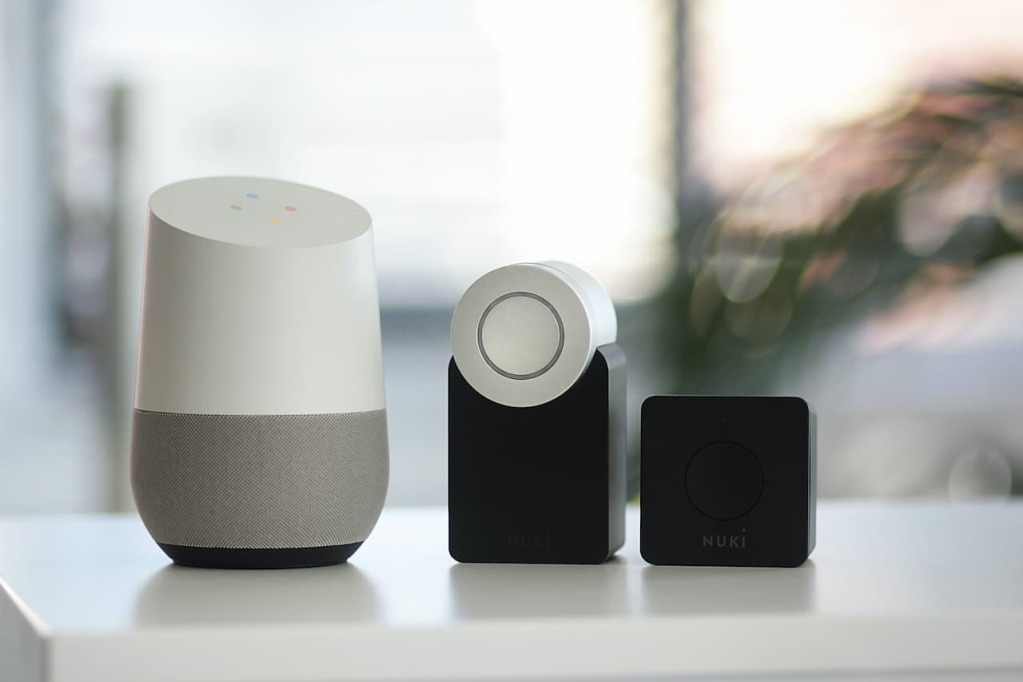
Amazon’s Echo Smart Speakers and Google Nest Speakers are the two most popular brands to choose from.
The Home Assistant team is also working on developing its own built-in voice controls which will be fully local and privacy-focused.
The Best Home Assistant Hardware 20203 Recommendations
Now that we have covered the essential components let’s explore some of the best hardware options for Home Assistant based on different budget ranges.
Home Assistant Budget Hardware
Utilizing Existing Hardware
An option for those who already have a server or NAS up and running. Home Assistant works great on both the Synology NAS and Qnap NAS.
Utilizing Unused Hardware
Have you got an old PC or Laptop lying around? – It must be 64-bit capable and able to boot using UEFI if using Home Assistant OS.
Raspberry Pi 4 or 5
The Raspberry Pi is a popular choice for budget-conscious users. It is a small, affordable single-board computer that can run Home Assistant smoothly. With various models available, choose one with at least a quad-core processor and 4GB of RAM for optimal performance.
Check out my Raspberry Pi for Home Assistant guide for an in-depth look at which Raspberry Pi to use and check out RPI Locator to find stores with available stock.
Home Assistant Green
Home Assistant Green is an affordable $99, plug-and-play smart home hub that runs the Home Assistant open-source software. It is the easiest way to get started with Home Assistant, and it is perfect for beginners and experienced users alike.
Home Assistant Green is powered by a 1.8 GHz quad-core CPU and has 4GB of RAM and 32GB of eMMC storage. It comes with a built-in Wi-Fi and Ethernet adapter, and it supports a wide range of smart home devices, including Zigbee, Z-Wave, Bluetooth LE, and Wi-Fi devices.
Unlike the Home Assistant Yellow, the Green does not come with Zigbee or Thread support out of the box and you will need to buy your own adapters to get support for these protocols.
ODROID
ODROID is a series of single-board computers (SBCs) that are designed for a variety of applications, including home automation, media streaming, and robotics. ODROIDs are based on ARM processors and are known for their performance, affordability, and open-source software support.
ODROID N2+ or ODROID M1 or ODROID C4
Specific bundles made for Home Assistant can be found at https://www.home-assistant.io/installation/odroid
ASUS Tinkerboard S
The ASUS Tinkerboard S is a single-board computer (SBC) that is designed for home automation and other IoT applications. It is based on the Rockchip RK3288 SoC, which has four Cortex-A17 cores and a Mali-T760 GPU. The Tinkerboard S has 2GB of RAM and 16GB of eMMC storage. It also has a 40-pin GPIO header, HDMI output, Gigabit Ethernet, and a USB 3.0 port.
The Tinkerboard S is a good option for anyone looking for a powerful and affordable SBC for home automation.
Mid-Range Home Assistant Hardware
Home Assistant Blue
Home Assistant Blue is a ready-to-use device that makes it easy to run Home Assistant, a popular open-source home automation platform. It is based on the ODROID-N2+, a powerful little computer that is specifically designed for home automation. It comes with Home Assistant pre-installed and all the necessary software, so you can start using it right away.
Home Assistant Yellow
Home Assistant Yellow is a ready-to-use device that makes it easy to run Home Assistant, a popular open-source home automation platform. It comes pre-assembled in a custom enclosure with a Raspberry Pi Compute Module 4 (CM4) and a custom heat sink for fanless, silent operation. Home Assistant Yellow has an integrated Zigbee chip by Silicon Labs to control Zigbee-enabled devices in your home. The chip is Thread-certified and will support the upcoming Matter smart home standard.
High-End Home Assistant Hardware
Intel NUC
The Intel NUC (Next Unit of Computing) is a compact and powerful mini-PC that can serve as a dedicated Home Assistant server. It provides flexibility in terms of hardware configuration and is suitable for advanced users.
I wrote a guide which can be found using this link to help you choose the right NUC by comparing the different models and requirements.
Compatibility and Integration Considerations
Before finalizing your hardware, ensure that it is compatible with Home Assistant. Check for manufacturer support and community forums to verify seamless integration with the platform.
Setting Up and Configuring Home Assistant Hardware
Once you’ve selected your hardware, follow the Home Assistant installation guides to install and configure Home Assistant. If you are installing on a Synology NAS you can follow my guide here or you can follow this guide if you need to install it on Proxmox.
Ensure that the system is up-to-date and regularly maintain it to guarantee smooth operation.
Troubleshooting Tips for Home Assistant Hardware
If you encounter any issues with your Home Assistant hardware, refer to the troubleshooting guides provided by the manufacturer or the Home Assistant community. They often contain solutions to common problems.
Future-Proofing Your Home Assistant Setup
As technology evolves, new hardware options and features will emerge. Keep an eye on the latest developments to future-proof your Home Assistant setup and stay at the forefront of home automation.
Conclusion
Choosing the right Home Assistant hardware is crucial for creating a seamless and efficient smart home experience. From budget-friendly options like the Raspberry Pi and re-purposing existing hardware to high-end solutions like Home Assistant Blue and Home Assistant Yellow, there are hardware choices to suit every need and budget.
Take the time to research and select the best hardware components that align with your home automation goals.
FAQs
Can I run Home Assistant on my existing computer?
Yes, Home Assistant can be installed on a wide range of devices, including desktop computers and servers.
Do I need a powerful processor for a basic smart home setup?
A basic smart home setup can run on a relatively modest processor. However, a more powerful processor will ensure better performance for larger setups and more complex automations.
Is it necessary to have cameras integrated with Home Assistant?
Cameras integrated with Home Assistant add an extra layer of security and enable visual monitoring of your home, but they are not mandatory for a functional smart home setup.
Can I control Home Assistant with voice commands?
Yes, many hardware options mentioned in this article support voice commands through platforms like Google Assistant or Amazon Alexa.
Is Home Assistant suitable for beginners in home automation?
While Home Assistant offers powerful features, it may have a learning curve for beginners. However, with online resources and a supportive community, it can be an excellent platform to start with.
